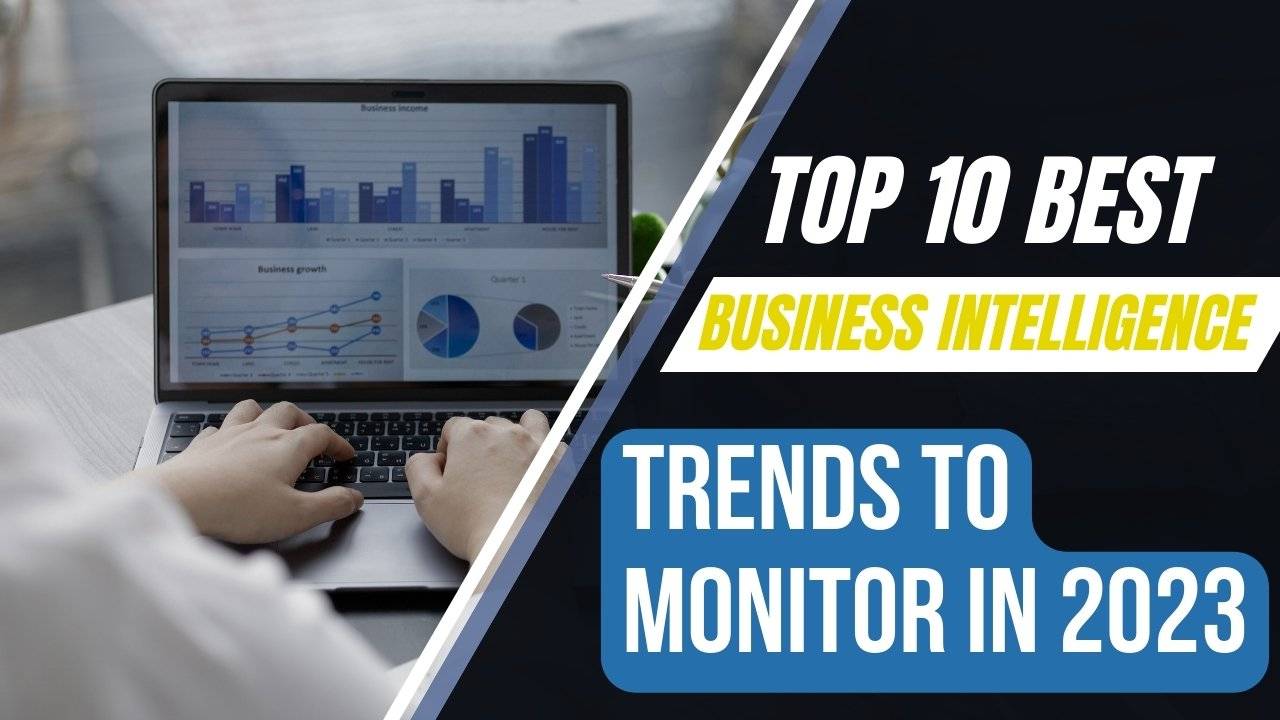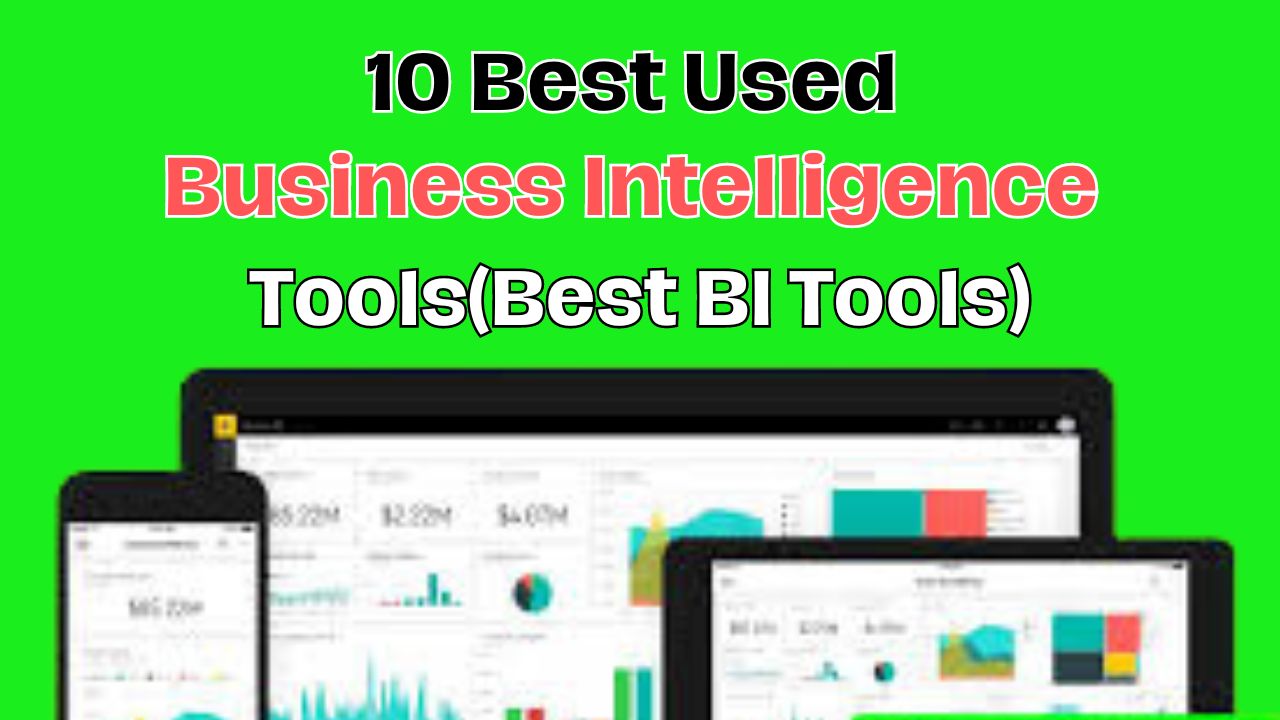10 Best Business Intelligence Trends to Monitor in 2023

In the ever-evolving landscape of modern Business Intelligence Trends, the role of Business Intelligence (BI) has shifted from merely informational to transformational. As we move into 2023, businesses are presented with an array of trends that are poised to reshape the BI landscape. These trends not only promise to provide data insights but also empower decision-makers to employ data-driven strategies for sustainable growth. This comprehensive guide explores the absolute BI trends that are set to dominate the year ahead.
Table of Contents
Top 10 Business Intelligence Trends to Monitor in 2023
1. AI-Driven Analytics: Uncovering Efficiency and Accuracy
Artificial intelligence (AI) has woven its way into virtually every aspect of the business world, and BI is no exception. This year, AI-powered analytics take center stage. By automating data processing, AI empowers businesses to sift through massive datasets, identify patterns, and extract actionable insights with unparalleled efficiency. It’s a game-changer that empowers data analysts to focus on strategic decision-making instead of mundane data crunching.
2. Augmented Reality (XR) for enhanced data visualization
Augmented reality (XR), including virtual reality (VR) and augmented reality (AR), is bridging the gap between data and understanding. XR-enabled data visualization provides an immersive experience that goes beyond traditional graphs and charts. Data sets can be transformed into interactive, three-dimensional representations, enhancing the ability to intuitively identify trends and outliers.
3. Hyper-Personalization: Tailoring Insights for Impact
In the information age, generic insights are no longer enough. Hyper-personalization has emerged as a beacon for effective decision-making. By tailoring insights to the needs of specific stakeholders, businesses can ensure that the right information reaches the right hands at the right time. This approach fosters better engagement and empowers decision-makers to act with precision.
Top 10 Free Warehouse Management System in 2023
4. Ethics in Data Use: Basis of Trust
Data breaches and privacy concerns have catalyzed the emphasis on ethics in data use As BI becomes more embedded in business strategies, maintaining data integrity and protecting user privacy have become non-negotiable imperatives. Businesses that prioritize ethical data practices not only comply with regulations but also build trust within their customer base. Business Intelligence Trends
5. Predictive and Prescriptive Analytics: From Insight to Foresight
The journey from descriptive analytics to predictive and prescriptive analytics is accelerating. Descriptive analytics provides insight into past events, but predictive analytics goes a step further by predicting future trends based on historical data. Prescriptive analytics takes this even further by recommending specific actions to optimize results This trifecta equips decision-makers with the tools to shape the future- Business Intelligence Trends.
6. Natural Language Processing (NLP) for Seamless Interaction
In an age of convenience, Natural Language Processing (NLP) shines as a transformative trend. Conversational AI interfaces, powered by NLP, enable users to interact with data using natural language. This democratization of data access empowers stakeholders across organizations to gain insights without requiring advanced technical expertise. Business Intelligence Trends
7. Democratization of data: Empowering all stakeholders
Data democratization is the process of making data accessible to all stakeholders, regardless of technical expertise This trend fosters a culture of data-driven decision-making and collaboration, empowering employees at every level to contribute insights that drive business growth.
Top 10 Best Mortgage Lenders of 2023
8. Edge Computing: Accelerating Real-Time Insights
In pursuit of real-time insights, edge computing takes the spotlight. By bringing computational processes closer to the data source, edge computing reduces latency and increases the speed at which insights are generated. This is especially beneficial for industries that require split-second decision-making, such as finance and logistics. Business Intelligence Trends
9. Blockchain strengthens data integrity and security
The rise of blockchain technology brings unprecedented data integrity and security to the BI landscape. Using its inherent immutability and decentralized architecture, businesses can ensure that their analytics outputs are tamper-proof and trustworthy. This is especially valuable in sectors where compliance and transparency are paramount. Business Intelligence Trends
10. Cloud-centric strategy for scalability
Cloud technology continues to be a driving force behind scalability and agility in BI. Cloud-centric strategies offer businesses the flexibility to scale resources on demand, reducing infrastructure constraints. Furthermore, cloud platforms facilitate remote access, enabling cross-functional teams to collaborate seamlessly regardless of geographic limitations.
Conclusion
In the rapidly evolving world of Business Intelligence Trends, adaptability is the key to survival. Embracing these top 10 trends for 2023 will undoubtedly help businesses navigate the complexities of data, make informed decisions, and stay ahead of the competition. By harnessing the power of AI, augmented reality, hyper-personalization, and ethical data practices, businesses can truly unlock the potential of their data for growth and innovation. The era of BI has changed, and the future is full of possibilities.
Frequently Asked Questions (FAQs) about Business Intelligence Trends
1. What is business intelligence?
Business intelligence refers to the technologies, techniques, and practices used to collect, analyze, and present business information to support decision-making.
2. How do embedded analytics benefit businesses?
Embedded analytics streamlines decision-making by integrating data insights into existing applications, reducing the need to switch between platforms.
3. What is hyper-automation in the context of BI?
Hyperautomation combines AI, ML, and automation to improve BI processes, automating tasks such as data preparation and visualization.
4. How does predictive analytics differ from prescriptive analytics?
Predictive analytics predicts future trends, while prescriptive analytics recommends actions based on those predictions.
5. Why is data democratization important?
Data democratization empowers non-technical users to access and analyze data, fostering a culture of data-driven decision-making.







